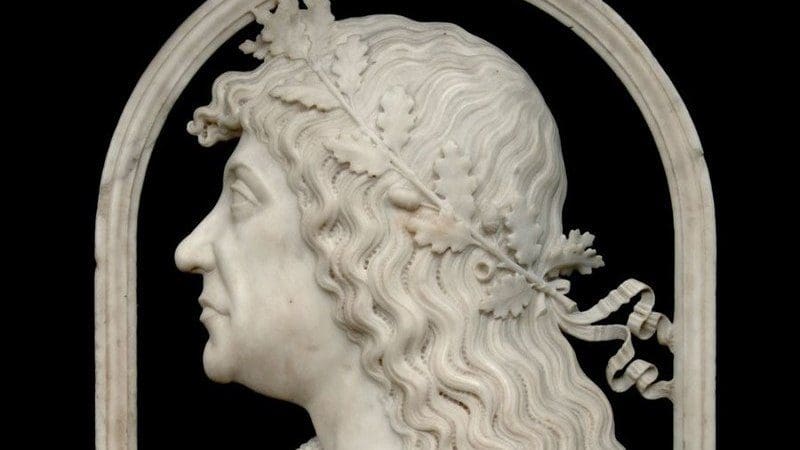Hungary has repeatedly celebrated Matthias Corvinus, also called King Matthias I (r. 1458–1490), most recently in 2008 and again in 2018, while his son John Corvinus was last commemorated this year, in 2023. The latest research shows that there are still plenty of aspects of the king’s reign that offer new insights, especially when considered from a broader Central European perspective.[1]
King Matthias, a great warrior, whom Hungarian folklore, in agreement with official historiography, honours as one of the most important military leaders of his time, in fact never ventured into open-field battles against the Turks. He rather achieved his military successes in campaigns against his Christian neighbours. The conquest of Austria and the capture of the city of Vienna were particularly dear to his heart, but he also fought many wars for the title of King of Bohemia and Silesia. At the same time, Matthias never forgot for a moment that the Ottoman Empire was the country’s archenemy, and he carefully guarded his kingdom’s borders. As a result, he annexed northern Bosnia to his country as a buffer zone after the capture of the castle of Jajce (today’s Bosnia and Herzegovina) in 1463. The brightest element of the military modernisation he initiated was his mercenary army of thousands, some of them former Hussites, which was named the ‘Black Army of Hungary’ after (but not because of) the King’s death—no other Hungarian ruler before 1526 could boast of such a force, but there were few paid armies in Europe comparable to it as well.[2]
But why do Hungarian public consciousness and historiography still struggle with the idealised figure of one of the greatest rulers in Hungarian history? The answer is very simple:
the King wrote about his reign in the propaganda works he advocated in such an intrusive way
that it still binds the hands of researchers and disturbs their discernment to this day. A good example of this is the case of the defeat at Körmend in 1459, which Italian historian Bonfini made into a victory in the Hungarian public consciousness; in reality, it was only a ‘victory’ thanks to humanist propaganda. Matthias tried to do the same after his defeat in the Principality of Moldavia in 1467, but sources recorded that he almost died of his wounds there.
Yet it was indeed during the reign of Matthias that for the last time in history, Hungary actively shaped European politics as a strong central power with a significant army. Not incidentally, the country successfully confronted the Ottoman Empire, capturing advanced Czech, Polish, and Austrian provinces. All the same, despite all this, 36 years after the death of the King, the medieval Hungarian state suffered a catastrophic defeat at the Battle of Mohács against the Turks, and within a few years, it was split into three parts. The question is, of course, whether these 36 years were a ‘gift’ of Matthias’ reign or not.
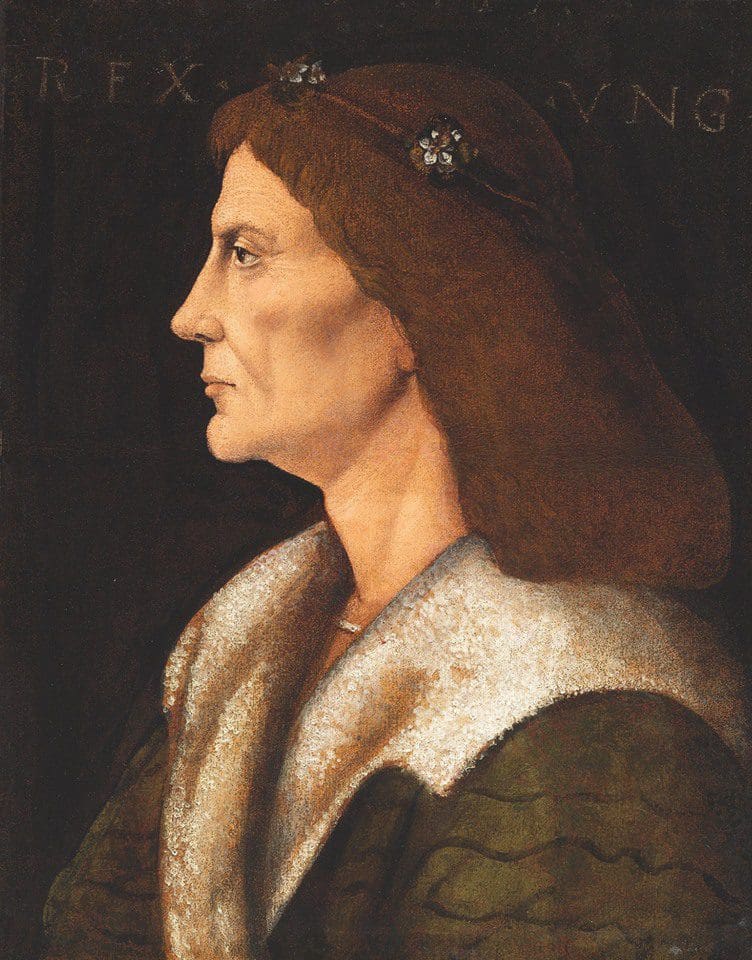
This striking contrast still puzzles the reader, and at the same time explains a lot. The unfortunate turn of the Ottoman conquest in Hungarian history, which began in 1526, in itself helped to solidify the image of Matthias, partly due to the rigidification of the topoi of a ‘great’ and ‘invincible’ ruler, and the suggestion that Hungary would not be where it is now if it had such rulers. Howevert, today, we can safely pose earlier shunned questions about the reign of Matthias, such as the relationship between the ‘old’ and the ‘modern’, the extent to which Renaissance culture spread beyond the royal court, whether the overwhelming royal power, the army, and conquests built up by Matthias had any strategic purpose at all, and whether we can even speak of a Renaissance state in Hungary in this period.
‘The goal is to become Corvinus from Hunyadi’: everything in foreign and domestic policy, on the battlefield, in representation, and in the arts, seemed to serve this goal. Matthias’ family took its name from an estate called Hunyad (today’s Vajdahunyad, Hunedoara in Romania), but the King wanted much more than that, which his court humanists were ready to give him. Even the King himself may not have believed in his kinship with the ancient Roman Valerius Corvinus, invented by the humanists (and then traced back through Constantine the Great to Jupiter), but the tradition of origins was useful for his diplomatic plans and dynasty-founding ambitions. Although Matthias’ father, John Hunyadi, became the country’s greatest landlord and regent–governor for many years (1446–1453), the Hunyadi family’s simple noble origin still set them apart from the ancient European dynasties. Ironically, his political connections in Italy did little to help Matthias become involved in European politics or to find a suitable wife for his son. He himself had to marry the illegitimate daughter of the King of Naples, Beatrice of Aragon, and his son John’s marriage to a princess of Milan remained a mere plan, too.[3]
Yet his courtly representation, international Gothicism, and the reception of the Renaissance in Hungary can be considered Matthias’ most brilliant achievements,
which were also highly appreciated by his contemporaries. It is undoubtedly a unique phenomenon of 15th-century Hungarian history that the Italian Renaissance had such a great impact in the country, preceding much of Europe, and that it was transmitted to the surrounding countries as well.[4]
It has been written, sometimes critically, that Matthias wanted to turn Hungary into Italy, and this ambition could be observed already before his marriage to the daughter of the King of Naples. Matthias’ father, John Hunyadi, was an uneducated and illiterate man, but he himself served for years in Milan as a mercenary. However, he had already entrusted his son’s education to Hungary’s first and most prominent humanist high priest, John Vitéz de Zredna. According to the unanimous testimony of his contemporaries, Matthias really experienced the humanist culture—for him, it was not just role-playing and propaganda, but everything that the court humanists offered him became an integral part of his life. His library, known by his contemporaries as the Bibliotheca Corvina, contained ancient authors, including volumes on military technology, which the King probably liked to read.[5]
The commitment to fighting against the Turks was a cornerstone of Matthias’ propaganda and the main basis of the country’s European role all along. The young King gained papal support precisely thanks to the military nimbus of his father, whom Pope Callixtus III described as the invincible athlete of Christ. Later, the King could not emphasise his successes against the Turks enough, just as in 1480, when he addressed a letter to the German Imperial Diet, or when he delivered a declaration of war to Frederick III of Habsburg. In a poem by his famous poet Janus Pannonius, the King marches against the Turks with the mace of Hercules, but perhaps the statue of Hercules at the entrance to the Buda Palace was just as well a warning to those entering the palace. Italian scholar and Catholic priest Marsilio Ficino himself also applied the Hercules proverb to Matthias in 1480 when the Hungarian King sent a brave army of 700 men across the sea to help him during the Turkish invasion of Otranto in southern Italy.
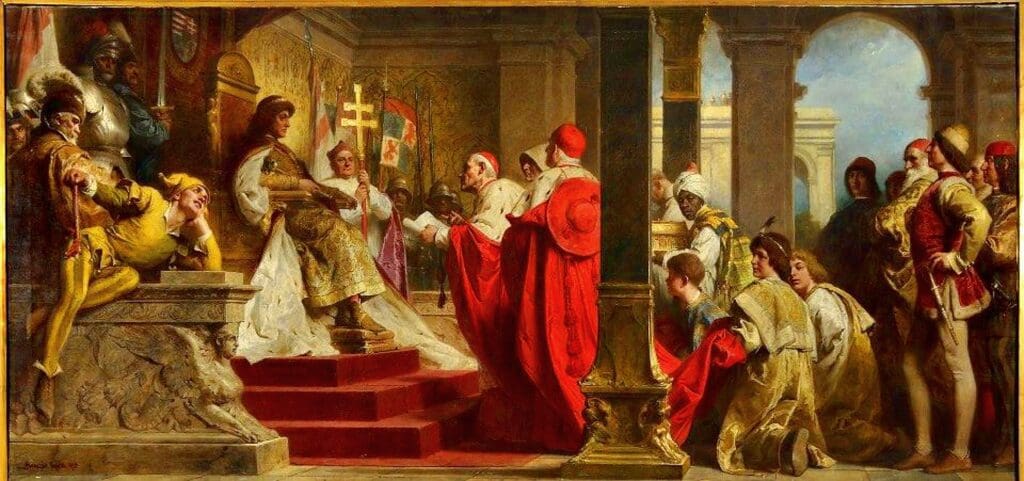
Another aspect of the image of the invictissimus rex, i.e. the ‘invincible king’, was indicated by the parallel between Matthias and Attila the Hun. This idea was deeply rooted in medieval Hungarian tradition where no one doubted the Hunnish–Magyar kinship written down in the Hungarian chronicles. Attila, as the national, elected, and invincible King of the Huns and the Magyars, was an attractive role model; moreover, both Kings’ main opponent was the Roman Emperor. Hungary was enriched by all this propaganda, and to this day, the ‘Renaissance of Matthias’ is one of the most positive elements of the image of Hungary throughout the world. One only has to think of the frescoes of the Vatican Apostolic Library, Mantegna’s equestrian painting on the wall of one of the houses in the Campo de’ Fiori in Rome, or the ‘library patron’ depicting Matthias still visible on the Baroque ceiling fresco of the National Library in Vienna. Besides, of symbolic importance is King Matthias’ funerary shield, which was preserved in the imperial collection in Vienna and was taken as spoils of war to Paris during the Napoleonic era, where it can still be seen today.
Nevertheless, in Matthias’ anti-Turkish policy, propaganda and reality are difficult to separate.
The Hungarian treasury did indeed need aid from the Pope and Venice, even though Matthias knew that the country and the army were not in a position to launch a decisive attack against the Ottoman Empire. At the same time, Matthias himself was the second king after Sigismund to build the fortifications protecting the country from the south, from the Eastern Carpathians to the Adriatic Sea. The line, reinforced with Italian engineers, defended the country with complete success until the fall of Nándorfehérvár (today’s Belgrade, Serbia) in 1521. However, it is also a fact that the Hungarian border guards let the Turkish raiders through to the German territories of Frederick III, the King’s great enemy. In 1475–76, in the Hungarian campaign against Šabac, Serbia, Matthias deliberately selected a small but strategically important Turkish fortress, which he then captured with his famous mercenaries, although with humiliating slowness, and at great cost. Yet an account of the victory, illustrated with a coloured engraving, was included in German historian Schedel’s Nuremberg Chronicle (1493), probably based on a printed pamphlet in German and Latin distributed by the King throughout Europe.
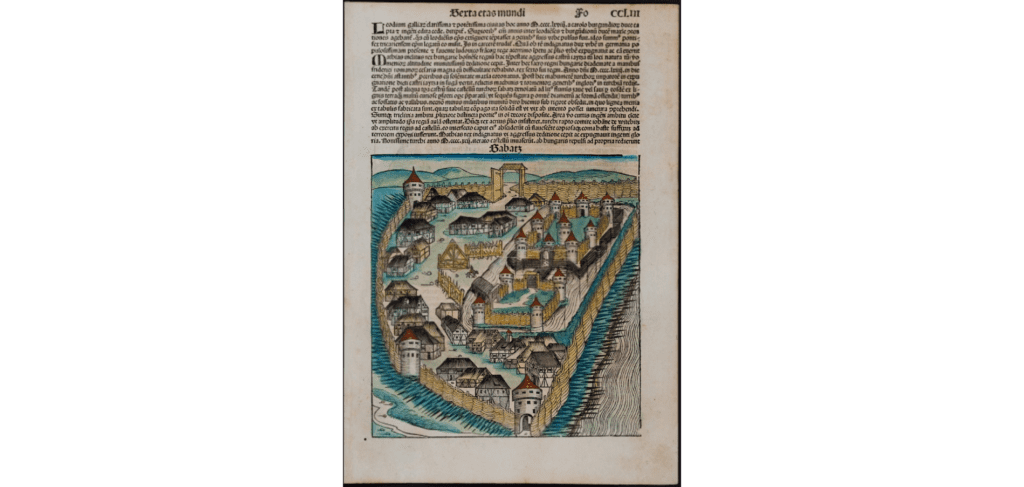
Matthias was a master of large-scale strategy, and it is not without reason that his Western wars were also for the Turkish side within the framework of the ‘grand strategy’: the Hungarian mercenary army stationed and fighting in neighbouring countries was a deterrent to them, too. The Turks understood this and did not launch a serious attack against the country during the lifetime of Matthias. However, the contemporary Hungarian overlords were less accepting of this and reacted with conspiracy theories, one of the reasons for which may have been the dissatisfaction with the King’s Turkish policy. They saw the mercenary army as a support for the tyrannical royal autocracy and a waste of the country’s revenues. Thus, the King’s long-term strategic goals in domestic and foreign policy were to be undermined within moments of his death, and it was no coincidence that his mercenary army was the first to be destroyed.
In Matthias’ period, there was much more continuity and of what can be safely called archaic medieval power in the Hungarian state than previously thought. Although the concept of the modern Renaissance state also includes the use of experts with a sense of official self-consciousness, there was little trace of this during the reign of Matthias: the chancellor remained a charter-copying body in the medieval sense. The most significant change was in the financial administration, where John Ernest, a Jewish merchant from Buda, filled the post of treasurer (1468–76).
It has to be recognised, however, that Matthias’ contemporaries already perceived the humanist court culture, the Renaissance artworks, the standing army, and the King’s enhanced power as extraordinary, no less so centuries later at the turn of the century, when Hungary celebrated its own unparalleled development as part of the Monarchy. The statue depicting the King, inaugurated in 1902 in Kolozsvár (today’s Cluj-Napoca, Romania), the birthplace of Matthias, also ‘raised the national king…as an altered national self-portrait’.[6]
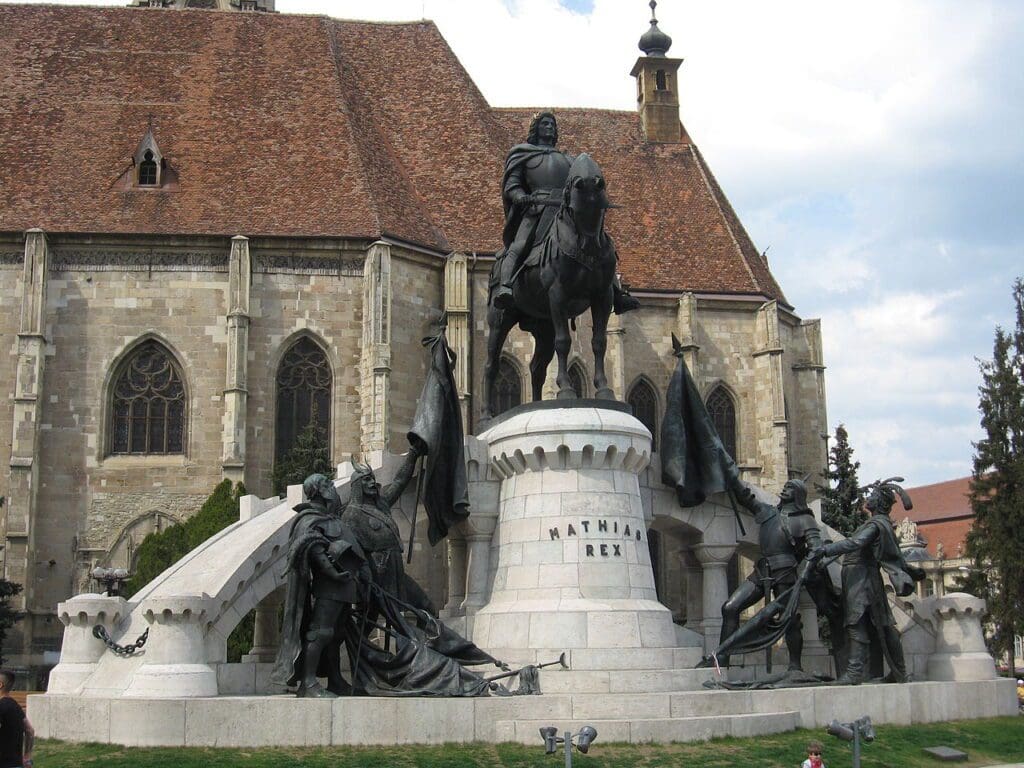
[1] Attila Bárány and Attila Györkös (eds.), Matthias and His Legacy: Cultural and Political Encounters between East and West, Debrecen, 2008.
[2] Tamás Pálosfalvi, From Nicopolis to Mohács: A History of Ottoman–Hungarian Warfare, 1389-1526, Leiden, Boston (MA), 2018, pp. 188–277.; Richárd Horváth, ‘The Warring King: Itinerary of Matthias Corvinus’, in Péter Farbaky, Enikő Spekner, et al. (eds.), Matthias Corvinus, the King: Tradition and Renewal in the Hungarian Royal Court, 1458–1490: Exhibition Catalogue, Budapest, 2008, pp. 51–63.
[3] Péter Farbaky, ‘The Heir. The Role of John Corvinus in the Political Representation of Matthias Corvinus, and as Patron of the Arts’, in Lívia Varga, László Beke, Anna Jávor, et al. (eds.), Bonum ut pulchrum: Essays in Art History in Honor of Ernő Marosi on His Seventieth Birthday, Budapest, 2010, pp. 413–432.
[4] Tibor Klaniczay and József Jankovics (eds.), Matthias Corvinus and the Humanism in Central Europe, Budapest, 1994.
[5] https://corvina.hu/en/front/, accessed 31 July 2023.
[6] Ernő Marosi, ‘A tudományos ikonográfiai kutatásnak nagy művészi eredménye’, in László Veszprémy (ed.), Rex invictissimus, Budapest, 2008, p. 240.
Related articles:

